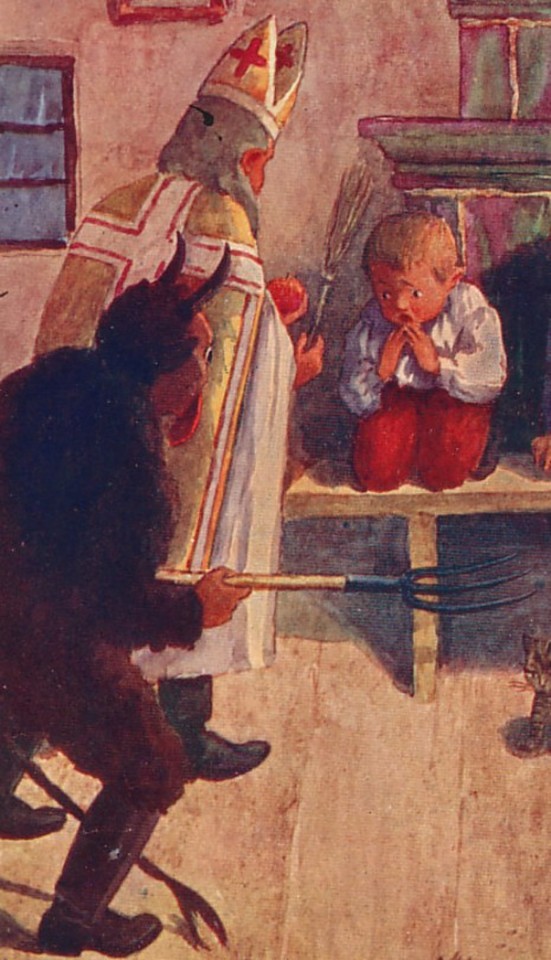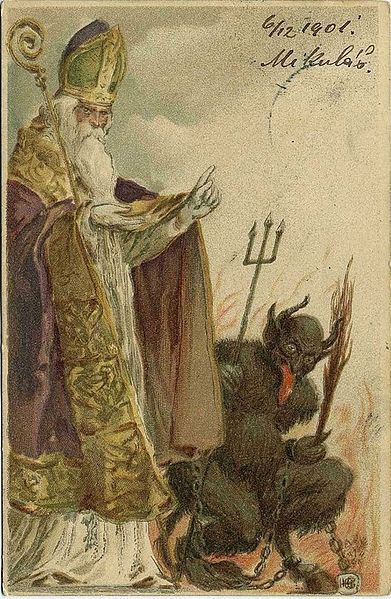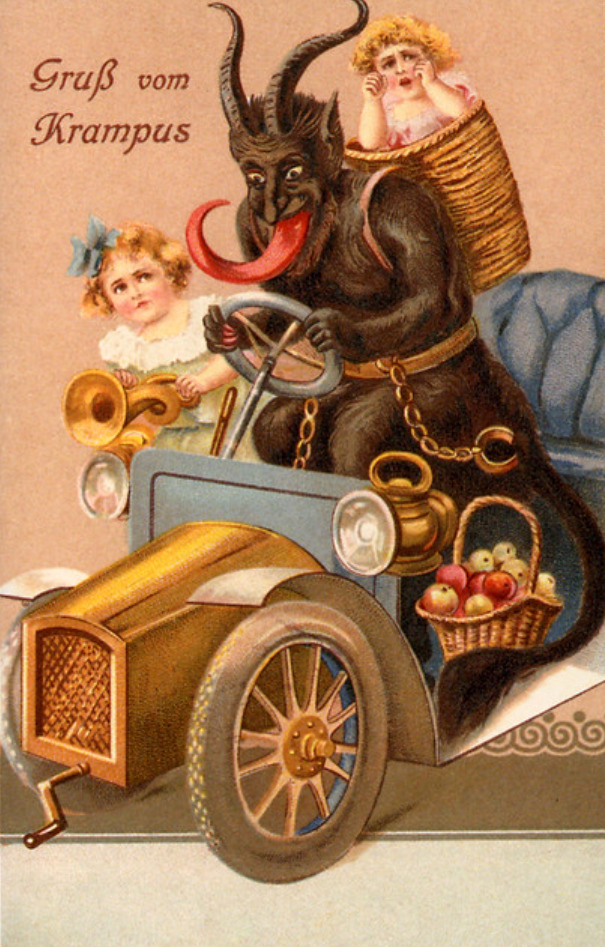Note
There is academic credence to the idea that she could have originated from goddesses of older nearby pantheons. This line of thinking connects her to Artemis & Apollo. I've met a few folks who also view her as a goddess because of it. I'm so glad people today are interested in her, she's incredible🖤
heyoo, I am curious and can't really hold it back, has anyone worked with Medusa?
I know many people have. Some modern practicioners say that she was once a goddess, but I've never seen any academic research supporting that.
I personally don't work with Medusa, but I do 100% support working with mythological and folkloric figures that aren't classified as "gods". If any of my followers know anything about working with her, I welcome their addition on this as well.
53 notes
·
View notes
Text
Lie Down in the Evening
By Christina, River.Oracle
Some days I wake up like an ox
I earned these stout stone shoulders
I learned to carry her
In the vast empty cold, alone
I marvel at my strength like the rock wall reaching heaven
This cliff is where the angels jump.
Some days I only carry my feet.
If it's a cloud or only the snow in the wind, I can't tell the difference.
I haven't seen a green thing for so long I tried to grow leaves inside of me
There's too much stone in my soil,
Like the land where I was born
Some days I am the bison
Unyielding under the weight of a million carcasses who came before me
I try to paint their bones but there are so so many
Instead they carve into my skin and bones and remind me of the grassland my mother once knew
The earth combs her hair
And stillness falls away, a petal in the wind
Some days I am only dust.
Peace looks like surrender to the wind.
Her tears sting my face as they crash down from heaven,
I think clouds are another world.
If I could just reach my hands into her nothingness and draw them out like something new and unborn
If I could be the seed, reaching, still blind under the soil
The sun has yet to hit my face
I am cold and some days I'm comfortable that way
It's the moon who has seen me, shedding, writhing
A dance that no man would recognize
Her gentle kiss is the key to my stuck ribs
Some days I am the black walnut tree
I mark black every finger print that ever touched me
Sometimes it's love, but you'd never know if it wasn't.
When the night falls in like leaping into the abyss,
The stars are easy for my tired eyes.
They paint me in colors I could only hope to learn.
The dark settling under the trees like so many ravens, beckons me away from the fire.
Lifeless, still, I collapse
My bones tumble in a hollow clatter
In the dirt, I lie, jumbled, unafraid of the dead things
Sometimes I think I'm one of them
Or I wish to be, I feel my skin
Piece by piece, opening to let the earth in
The earth opens and lets me in too.
When the dawn strikes me I will remember the lightning
It struck me like I've never been struck
But I have.
I've only forgotten the embrace of the thunder.
I rise again on feeble legs
And there lies the ox, the bison
I wonder if I am one of them.
Their pelt stripped away, their hearts and kidneys and so much blood exposed.
I think I remember the seed I was
I try to imagine it, before the wind kissed me
Before the moon became my lover
Before I needed the ox's shoulders.
I wonder if bison ever kneel before the sunset
If they bow their horns to kiss the beloved earth
I wonder if the ox ever lies down in the evening.
I wonder if they miss the sun.
If the rain on their face looks like so many tears.
#modern paganism#pagan witch#paganism#folk magic#traditional withcraft#bison#buffalo#pagan poetry#poetry#witchcraft#folk witchcraft#polytheism#witch#American witch#witch poetry#witch art#nature#nature poetry#Ozark witch
1 note
·
View note
Text
Krampus: The Dark Shadow of Winter
By: Christina McCarthy

While many figures in pagan & witch folklore are shrouded in layers of mystery, some stand out as a little stranger than the others. The more I dig to uncover the true nature of Krampus, the more an ethereal snowy mist seems to gather, further obscuring him into the realm of whimsical Yuletide mythology. Perhaps this is how he’s come to inhabit such a unique place in the psyche of modern people around the world.

There is debate about how & when the Krampus legend came into being. Some say he’s a sort of pre-Christian deity, the son of Hel, Norse goddess of the Underworld, but evidence for this theory is nonexistent and appears to be a very modern addition to Krampus lore. Other sources say his festival in Germany and throughout Alpine Europe started only a few hundred years ago, a now faded older tradition from pre-Christian Germanic paganism adopted into its modern form by the Catholic church to subdue pagan influences around midwinter. Some classic depictions include chains, to show the power of the Christian god over the “devil”.

This famous depiction shows his one cloven hoof and one clawed bear foot.
Images like these, often featuring poems and season's greetings, come from Krampuskarten, or Krampus cards, often whimsical and humorous greeting & post cards which were exchanged around the holidays, starting in the 19th century. He is often depicted mischievously pursuing beautiful women in a Cupid-like fashion, punishing and chasing weeping children, and accompanying St. Nicholas.
His name appears to come from a combination of a Middle German word, “kralle”, meaning “claw”, and a Bavarian word “krampn” meaning dead, shriveled, or lifeless, connecting him with death mysteries. He is depicted as an often hairy, black or brown, therianthropic beast, part man, part goat, with cloven hooves, reminiscent of the satyrs of Greek mythology. He's also commonly shown with sharp fangs, a red lolling tongue, large bulging eyes, and a single clawed bear foot. There are other regional variations of this spirit, with similar features & mythic function - Knecht Rubrecht and Belsnickel in Germany, Schmutzli in Switzerland, Bartel in Austria, Zwarte Piet or "Black Pete" farther west, and many other midwinter demons. There's even a feminine version - the goddess Perchta lives on today through a similar tradition, Perchtenlauf, where the "ugly" and "beautiful" Perchte or Percht, her hoard of Krampus-like spirits, stage a mock battle in the streets as perhaps a symbolic battle between death and life occurring at midwinter. Some consider this to be a precursor to modern Krampuslauf celebrations, yet the Perchta tradition continues to exist alongside Krampus today.
The widespread prevalence of such similar traditions gives rise to the theory of a class of spirits like Krampus whose names and specific lore vary by local region.

This map shows Alpine Europe - the highlighted area shows the location of the Alps, but of course the Krampus tradition stretches beyond the exact borders shown.
Map source: https://alpshiking.swisshikingvacations.com/where-are-the-alps/

Regardless of his origin, today Krampus strikes a cheerful holiday fright into the hearts of children and adults alike. It’s said that he punishes the children on St. Nick’s naughty list, whipping them with a bundle of birch switches called a "ruten bundle" or sometimes a whip, or kidnapping them in a sack or basket on the eve of St. Nick’s feast day. The punishment is said to fit the crime - the lightest sentence being handed a single birch stick, as if a reminder of which path to choose, and the naughtiest children being dragged to hell or even drowned or eaten by Krampus! Instead of the Christmas Devil's lumps of coal and harsh sentences, good children would find little gifts filling their shoes from the jovial Saint Nicholas, who is often depicted dressed as a bishop with a golden ceremonial staff as pictured above. Sources below have more information about St. Nick if you want to learn more about the minor saint we now call Santa Claus!

In Germanic Europe, holiday festivities in December are first heralded by Krampusnacht, meaning “Krampus Night”, and Krampuslauf, the “Krampus Run”, where revelers dress up in extensive costumes with furs, masks, and horns to run the streets and terrify the townsfolk, inspiring Yuletide nightmares of the Christmas Devil.
This practice may have connection to the pervasive European myth of the Wild Hunt, where dark forces - often depicted as a hunter on horseback and his hounds, among other dark pagan imagery - parade through the skies around midwinter, carrying the souls of mortals over wintery skies to the afterlife. Both Krampuslauf and the Wild Hunt may partly be reminiscent of an ancient cleansing ritual where disguised townsfolk would run the streets, ringing bells and perhaps rattling Krampus's chains, acting as a hellish hoard to scare away unwelcome spirits. To extend the conjecture even farther, some draw a link from Krampus to the witches' horned god, due to his similarity to "wild man" therianthropic figures such as Pan, Cernunnos, and Herne.
Once the children have been sufficiently frightened into another year of their best behavior, the Krampuses traditionally drink alcohol in celebration. The drink of choice, for this after party and for offerings to Krampus, is schnapps. The Krampuslauf tradition is believed to be around 500 years old, and while many attempts to quell these celebrations have been enacted by oppressive forces, from the Catholic church throughout several centuries, to the Christian Social Party of Austria with their famous propaganda pamphlet titled "Krampus Is an Evil Man", to the Nazi Party, the Krampus run is alive and growing today.

From a Krampus celebration in Austria.
One of the most famous festivals takes place in Munich, Germany. Among their famous Christmas marketplace, filled with glittering lights and symbols of Catholic advent, caroling, traditional treats, and the glow of a modern city, Krampuses can be found running around giving folks a chilling holiday scare, reminding them of a time gone by when the fear of winter’s darkness kept everyone warm and safe inside their homes on the eve of December 5th.

Krampus in a getaway car! We often think of a tradition like this as distant history, so seeing a depiction made during a period of industrialization is a little mind bending!
I personally believe the modern resurgence of Krampus is related to a collective yearning, whether conscious or unconscious, to honor the darkness of the season. What’s become a heavily Christianized (and commercialized) “holiday season” of constant flashing lights and warm familial celebrations, was once more widely regarded as a time of death, darkness, and difficulty. In the depth of winter, when resources and warmth were scarce & daily life was focused on enduring the season, celebrations of the sun were an ode to survival and hope that life would return to the earth again. Krampus represents this inescapable reality of the darkness and hopelessness we experience when the sun is at its weakest, when all the earth holds its breath, silently praying for deliverance from night’s bitter shadows.
Sources:
Note: I'm loosely using Chicago style format, unless there isn't enough information to bother, in which case I will usually just post the link.
🕯️Bustamonte, S. (2018) Krampus Spaß, The Wild Hunt: Pagan News and Perspectives. Available at: https://wildhunt.org/2018/12/the-murky-origin-of-the-krampus.html.
This was an especially rich resource! It contained a lot of detailed information that I’ve never heard before, but most of the new content presented, I was able to verify by looking at other sources. It also lists a book source that seems interesting - books aren’t foolproof, their information should still be verified, but a website listing a printed source is a good sign the information is likely to be correct!
🕯️Krampus. https://brickthology.com/category/banishing/
This was an interesting resource with a wealth of information, which was not sourced and the author seemed to be a random unidentified person, so I still cross referenced the information. This person seemed to have a good working knowledge of the cultural traditions which may be from personal experience, and that kind of information is important in research about regional folklore.
🕯️ https://www.britannica.com/topic/Krampus
🕯️https://www.britannica.com/biography/Saint-Nicholas
For most projects, I use simple pages like these as a starting point for a quick summary of basic information. Brittanica has been around a long time, and I know the information on their site is usually accurate. I still cross-verify the information to make sure there aren’t any inconsistencies.
🕯️Christmas Market at Marienplatz: The Magic of the Christmas Season. Simply Munich. Available at: https://www.munich.travel/en/pois/markets-festivals/christmas-market-marienplatz.
I had some prior knowledge that one of the most popular Krampus Runs takes place in Munich, so I sought out an official Munich website to get their version of the information. What I found was context surrounding Krampus, seating him firmly in modern German customs, and that helps bring mythology to life.
🕯️Krampus, the Christmas Devil of Alpine Europe. The German Way & More. Available at: https://www.german-way.com/krampus-the-christmas-devil-of-alpine-europe/.
I didn’t strictly use this source in this blog post, but I found it to be a credible source that goes further into detail about regional Krampus traditions, containing photos, videos, and further links on related topics. I like to provide sources like this in my bibliographies for people to learn more than what I wanted to cover in the post.
🕯️Perchtenlaufen. https://en.wikipedia.org/wiki/Perchtenlaufen
That's right, this is a wikipedia link! Sure, wikipedia can be unreliable. As long as you're checking the information with other sources, there's nothing wrong with using it as a starting point to break into information you're not familiar with.
All photos with sources not listed are under public domain.
#krampus#krampusnacht#blessed yule#yule log#christmas#christmas traditions#midwinter#winter solstice#modern paganism#pagan witch#folklore#germanic folklore#norse folklore#norse#krampus run#christmas devil#st nicholas#christmas folklore#krampuslauf#paganism#witchcraft#witches of tumblr#germanic paganism#folk magic
49 notes
·
View notes